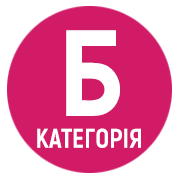FEATURES OF CONDUCTING LABORATORY WORK ON ELECTRICITY BY MEANS OF CLOUD-ORIENTED TECHNOLOGIES
DOI:
https://doi.org/10.32782/pet-2023-1-4Keywords:
demonstration, laboratory work in physics, demonstration set, educational panel, digital laboratory, Internet simulation, distance learning, quarantineAbstract
The article offers an introduction to the possibility of conducting demonstration and laboratory work in physics using the example of organizing work to verify the laws of serial and parallel connection. This concept can be implemented using cloud technologies or available Internet resources with the possibility of further processing of the obtained results. This project can be successfully used by teachers of any educational institutions and levels of education to conduct laboratory work by students of a school, college or other educational institution. Laboratory work, which is one of the forms of learning and which is one of the accurate and reliable methods of assessing practical knowledge, skills and abilities, can be used in conditions of distance learning or quarantine, such as during the quarantine introduced in 2020 to prevent the spread of the coronavirus disease of COVID-19. An example of an experiment using Internet simulation is given. The results of the conducted pedagogical experiment convincingly prove that the use of cloud technologies is a powerful tool and an effective means of teaching pupils and students.
References
Концепція управління процесами формування природничо-наукової компетентності майбутнього педагога фізико-технологічного профілю в STEM-орієнтованому навчальному середовищі. С. 104-108. https://science.kpnu.edu.ua/wp-content/uploads/2021/09/1-1.pdf
Мартинюк О.С. Тривимірне прототипування як складник STEMтехнологій у конструктивно-технічній і науково-дослідній роботі студентів та учнів. Збірник наукових праць Кам’янець-Подільського національного університету імені Івана Огієнка. Серія педагогічна / [редкол.: П. С. Атаманчук (голова, наук. ред.) та ін.]. Кам’янець-Подільський : Кам’янець-Подільський національний університет імені Івана Огієнка, 2019. Вип. 25 : Управління інформаційно-навчальним середовищем як концептуальна основа результативності фізико-технологічної освіти. С. 61-64. URL: http://ped-series.kpnu.edu.ua/article/view/189486.
Мартинюк, О., Мирончук, Г., Панкевич, С. Організаційно-методичні умови використання цифрових лабораторій у системі впровадження освітнього напряму STEM. Фізика та освітні технології. 2022. (1), 34–40. https://doi.org/10.32782/pet-2022-1-4
Межуєва І. Ю. Тестування як форма контролю знань, умінь, навичок. Переваги і недоліки. Молодий вчений. 2017. № 9. С. 394-398
Нова українська школа. Концептуальні засади реформування середньої школи. Ухвалено рішенням колегії МОН 27.10.2016. URL: https://mon.gov.ua/storage/app/media/zagalna%20serednya/nova-ukrainska-shkolacompressed.pdf
Освітній проект «На урок» для вчителів. URL: https://naurok.com.ua
Панкевич С.С. Особливості проведення тестування з фізики засобами хмаро орієнтованих технологій в закладах медичного профілю. Збірник наукових праць Кам’янець-Подільського національного університету імені Івана Огієнка. Серія педагогічна / [редкол.: С.В. Оптасюк (голова, наук. ред.) та ін.]. Кам’янець-Подільський : Кам’янець-Подільський національний університет імені Івана Огієнка, 2020. Випуск 26
Розпорядження Кабінету Міністрів України від від 13 січня 2021 р. № 131-р «Про затвердження плану заходів щодо реалізації Концепції розвитку природничо-математичної освіти (STEM-освіти) до 2027 року», 2021. URL: https://www.kmu.gov.ua/npas/pro-zatverdzhennya-planu-zahodiv-sh-a131r.
Хомутенко М. Віртуальний фізичний експеримент в хмаро орієнтованому навчальному середовищі. Наукові записки Кіровоградського державного педагогічного університету імені Володимира Винниченка. Серія : Проблеми методики фізико-математичної і технологічної освіти. 2016. Вип. 9(3). С. 175-179.
Шарко В. Модернізація системи навчання учнів STEM-дисциплін як методична проблема. Наукові записки Кіровоградського державного педагогічного університету імені Володимира Винниченка. Серія : Проблеми методики фізико-математичної і технологічної освіти. 2016. Вип. 10(3). С. 160-165. URL: http://nbuv.gov.ua/UJRN/nz_pmfm_2016_10(3)__37.
Bilousova, L., Gryzun, L. and Zhytienova, N., 2021. Interactive methods in blended learning of the fundamentals of UI/UX design by pre-service specialists. Educational technology quarterly. Available from: https://doi.org/10.55056/etq.34.
Lin, Y.T., Wang, M.T. and Wu, C.C., 2019. Design and Implementation of Interdisciplinary STEM Instruction: Teaching Programming by Computational Physics. The Asia-Pacific Education Researcher, 28(1), pp.77–91. Available from: https://doi.org/10.1007/s40299-018-0415-0.
Martyniuk, O.O., Martyniuk, O.S. and Muzyka, I.O., 2020. Formation of informational and digital competence of secondary school students in laboratory work in physics. In: S.O. Semerikov and M.P. Shyshkina, eds. Proceedings of the 8th Workshop on Cloud Technologies in Education (CTE 2020), Kryvyi Rih, Ukraine, December 18, 2020. CEUR-WS.org, CEUR Workshop Proceedings, vol. 2879, pp.366–383. Available from: http://ceur-ws.org/Vol-2879/paper20.pdf.
Martyniuk, O.O., Martyniuk, O.S., Pankevych, S. and Muzyka, I., 2021. Educational direction of STEM in the system of realization of blended teaching of physics. Educational Technology Quarterly [Online], 2021(3), pp.347–359. Available from: https://doi.org/10.55056/etq.39 [Accessed 28 November 2022].
Morze, N. and Strutynska, O., 2022. Model of the Competences in Educational Robotics. Proceedings of the 1st Symposium on Advances in Educational Technology – Volume 2: AET. INSTICC, SciTePress.
National Academy of Engineering and National Research Council, 2014. STEM Integration in K-12 Education: Status, Prospects, and an Agenda for Research. Washington, DC: The National Academies Press. Available from: https://doi.org/10.17226/18612.
Papadakis, S. and Kalogiannakis, M., 2019. Evaluating the effectiveness of a game-based learning approach in modifying students’ behavioural outcomes and competence, in an introductory programming course. A case study in Greece. International journal of teaching and case studies, 10(3), pp.235–250. Available from: https://doi.org/10.1504/IJTCS.2019.102760.
Pylypenko, O., 2020. Development of critical thinking as a means of forming STEM competencies. Educational dimension, 55(3), p.317–331. Available from: https://doi.org/10.31812/educdim.v55i0.3955.
Slipukhina I., Polishchuk A., Mieniailov S., Opolonets O. and Soloviov T. (2020). Methodology of M. Montessori as the Basis of Early Formation of STEM Skills of Pupils. In Proceedings of the 1st Symposium on Advances in Educational Technology – Volume 1: AET, ISBN 978-989-758-558-6, pages 211-220. DOI: 10.5220/0010922500003364
Tzagkaraki, E., Papadakis, S. and Kalogiannakis, M., 2021. Exploring the Use of Educational Robotics in Primary School and Its Possible Place in the Curricula. In: M. Malvezzi, D. Alimisis and M. Moro, eds. Education in & with Robotics to Foster 21st-Century Skills. Cham: Springer International Publishing, pp.216–229 URL: https://doi.org/10.1007/978-3-030-77022-8_19.
Why many schools are 'up in the air' about cloud computing/Education Technology:веб-сайт. URL: https://edtechnology.co.uk/Article/why-many-schools-are-up-in-the-air-about-cloud-computing
Zhorova, I., Kokhanovska, O., Khudenko, O., Osypova, N. and Kuzminska, O., 2022. Teachers’ training for the use of digital tools of the formative assessment in the implementation of the concept of the New Ukrainian School. Educational technology quarterly, 2022. Available from: https://doi.org/10.55056/etq.11.
Лабораторія електрики: постійний струм – віртуальна лабораторія. URL: https://phet.colorado.edu/uk/simulations/circuit-construction-kit-dc-virtual-lab








